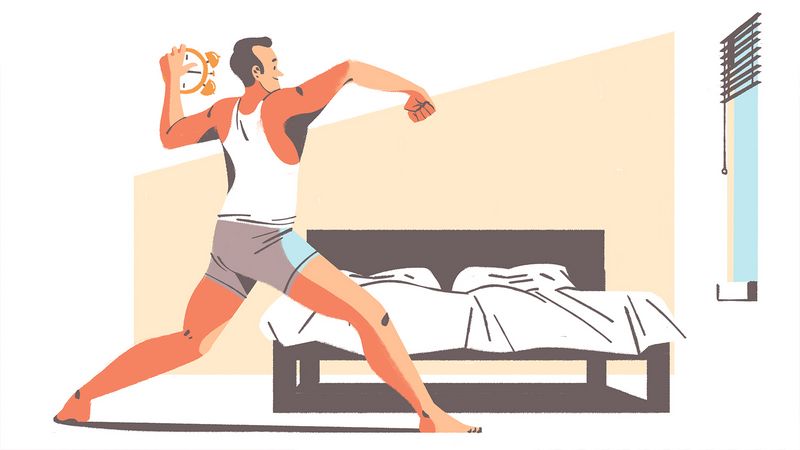THE JOURNAL

Illustration by Mr Tommy Parker
From Ironman workouts to a cup of tea – what gets leaders of their fields out of bed.
Not a morning person? Neither were Messrs Benjamin Spall and Michael Xander, which is why five years ago they started the website My Morning Routine, interviewing 300 successful individuals about their waking hours. Now 64 examples of their collected wisdom have been distilled into a book of the same name.
“The way you spend your morning has an outsized effect on the rest of your day,” they write. And the tone is set from the minute you stop – or snooze – your alarm. Building a better “habit stack” – a series of linked actions, like a chain reaction – can take you from getting up to getting more stuff done. Thankfully for those of us who aren’t professional productivity gurus, the book also features practical advice on how to fit beneficial things we know we should be doing, such as exercise and meditation, into our lives.
It’s important to note, as the authors do, that there’s no one right way to start your day, although there are plenty of wrong ones, such as plunging down an email or social media rabbit hole before you’ve even got out of bed. What’s optimal for someone else may not be for you. With that in mind, these five case studies may prove helpful.
Mr Ryan Holiday
The former director of marketing for American Apparel turned newspaper columnist and author of stoically philosophical self-help books such as The Obstacle Is The Way and Ego Is The Enemy imposes a rule of doing one thing before he checks his email and tackles his to-do list. That could be going for a long run, journalling with his infant son on his lap or even just showering, but usually it’s writing for an hour or two. In order to be more productive, he also started getting up earlier, which for him is 8.00am. Ah, creatives.

General Stanley McChrystal
With exemplary military discipline, the retired four-star US Army general wakes up at 4.00am every day to shave and work out, a routine he has maintained for 35 to 40 years and while on deployment in Iraq and Afghanistan. To prevent injury, he alternates running for just over an hour with four sets of press-ups and an extensive core routine (he’s had two operations on his back) followed by upper-body moves such as bench presses and pull-ups. Most days, he doesn’t eat anything until dinner – and is in bed by 9.00pm.

Mr Kevin Cleary
The CEO of Clif Bar hasn’t let a busy schedule or three children under the age of 10 become an excuse for not exercising, which explains how he was able to complete an Ironman triathlon and compete on TV obstacle course American Ninja Warrior. He removes any impediment by rising at 6.00am to train, having laid everything out the night before, from his cycling and running gear to the ingredients of his morning protein shake. On Sundays, he schedules his sessions for the forthcoming week around work and kids.

Mr Michael Acton Smith
Unsurprisingly, the CEO of meditation app Calm gets his Zen on unfailingly, performing the Daily Calm, a 10-minute session on a different theme each day, with his employees at the company’s San Francisco HQ. But before the London native gets there, and after he has a cup of tea, goes to the gym, showers and dresses while listening to a news briefing, he stops at a coffee shop for an hour en route. In that not-workspace, he gets into a flow state and crunches through calls, to-do lists and replies to emails.

Mr Ed Catmull
Upon waking, the president of Pixar and Walt Disney Animation Studios makes himself a coffee containing three shots of espresso, three tablespoons of cocoa powder and two sweeteners, which he drinks while checking email, reading three papers and checking news aggregators. He never misses his 30- to 60-minute Vipassanā meditation, in which he focuses on his breath, although he shortens it if necessary. And if a good idea pops into his mind, he writes it down so that he can, in the words of Frozen’s Elsa, let it go.


